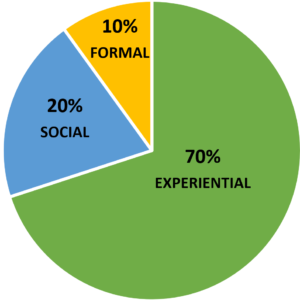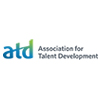
Spell the word “stressed” backwards, and you get “desserts.” Sometimes when you mix things up a little, you gain surprising perspective! That’s what we’ve done with a certain beloved model of learning and development to create a process that really sticks.
In the first part of this series, we explained that the 70-20-10 model supposes that we absorb information according to the following ratio of experiences: 70% from challenging assignments, 20% from developmental relationships and 10% from coursework and training.
Many organizations have adopted this training approach because it overcomes two major obstacles, cost and timeliness, by allowing people to learn at the speed of the business.
At Minaya Learning Global Solutions, we believe 70-20-10 works better as a guideline than a rule. When using the 70-20-10 model as a backdrop while explaining proposed learning interventions for clients, we tend to present it out of order. That’s because by inverting the model, we get much better results!
Step one: Coursework and training
Ten percent of learning in the workplace occurs formally. Start with coursework and training first, and you’ve created the foundation for mastery of conceptual knowledge, which is acquired through formal training.
Step two: Developmental relationships
Twenty percent of learning comes from other people. Conversations, networks, knowing the right people and asking the right questions at the right time all contribute to the developmental relationship portion of this model. Once formal training is complete, peer interaction, social media and performance support comes into play. This helps remind, reinforce, validate and expand the learners’ understanding – even at mastery stages.
Step three: Challenging assignments
Finally, 70 percent of the skills required to perform well at a job are learned through experience and good old-fashioned practice. Assimilated learning embeds the needed skills, knowledge and behaviors into the learners’ brains, hearts and actions through applied learning, coaching and feedback.
The human brain is an amazing thing, but memory retention isn’t actually its strong point. Research shows that we forget half of what we’re told within an hour of hearing it unless we put it into practice. By inverting 70-20-10, you’ll gain rich perspective into a learning and development process that is “sticky” in the best possible way. Dessert, anyone?
NEXT (3 of 4) : 70-20: IGNITE THE FLAME TO DRIVE LEARNING OUTCOMES




